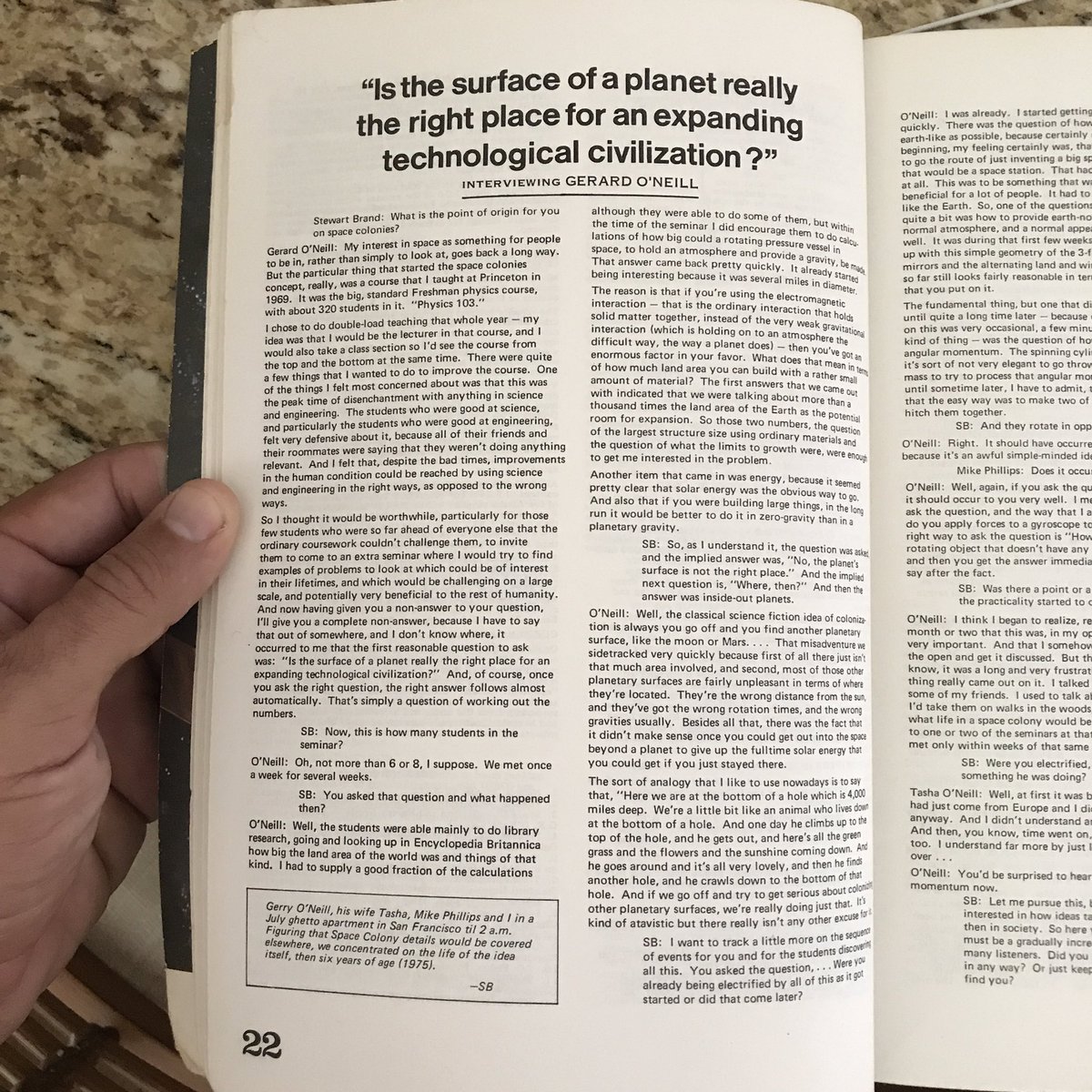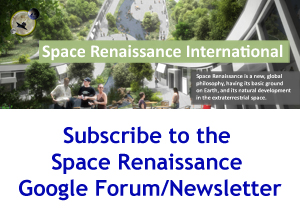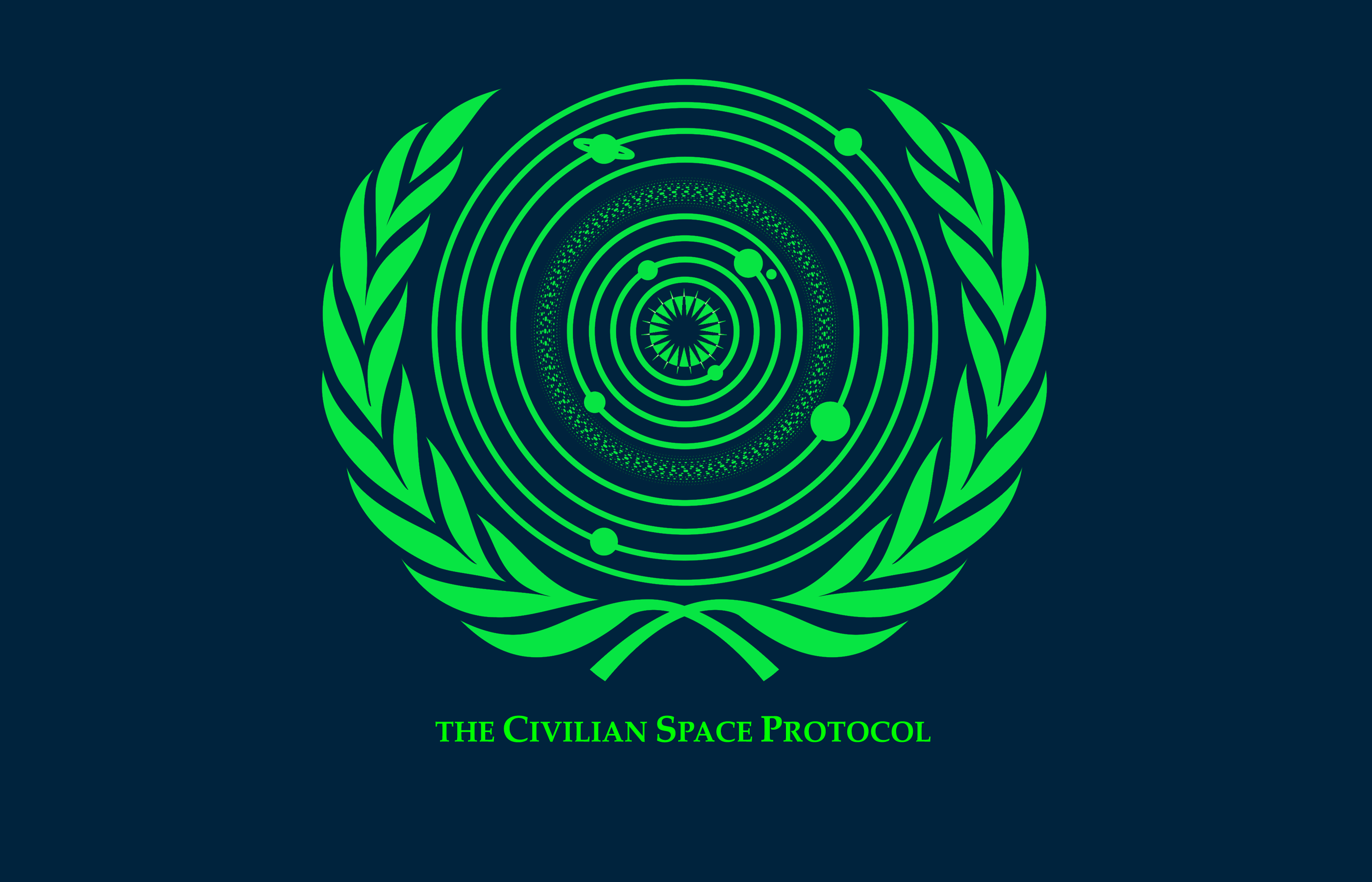Is the surface of a planet really the right place for an expanding technological civilization?
by A. V. Autino
While recovering the materials of the old Technologies of the Frontier website (destroyed by hackers few years ago), I came across this document: an interview by Stewart Brand’s with Gerard O’Neill, made in July 1975. In fact, it is also online on the NASA’s website https://settlement.arc.nasa.gov/CoEvolutionBook/Table_Of_Contents.HTML, and is linked from the NSS website as well.
However, reading Gerard O’Neill’s history of the development of his great idea gave me a big emotion, and I thought worth to propose it for further reflection and possible engagement today, while we are crossing our fingers, waiting for the first humans going to orbit on a private launch vehicle, the Space X Dragon Crew.
The document is now online on the SRI website, and I thought worth to include it among the space renaissance philosophy basic documents.
Here are some excerpts.
“It occurred to me that the first reasonable question to ask was: «Is the surface of a planet really the right place for an expanding technological civilization?» And, of course, once you ask the right question, the right answer follows almost automatically. That’s simply a question of working out the numbers.”
“The sort of analogy that I like to use nowadays is to say that, Here we are at the bottom of a hole which is 4,000 miles deep. We’re a little bit like an animal who lives down at the bottom of a hole. And one day he climbs up to the top of the hole, and he gets out, and here’s all the green grass and the flowers and the sunshine coming down. And he goes around and it’s all very lovely, and then he finds another hole, and he crawls down to the bottom of that hole. And if we go off and try to get serious about colonizing other planetary surfaces, we’re really doing just that. It’s kind of atavistic but there really isn’t any other excuse for it.”
“I used to talk about it to my children. I’d take them on walks in the woods, and speculate about what life in a space colony would be like. In fact Tasha came to one or two of the seminars at that time, because we had met only within weeks of that same time.”
In the interview, O’Neill tells that his theory was rejected for several years by all of the scientific magazines. They started to buy only after Gerard begun to give talks to the students, getting huge success. Maybe this fact should teach something to ourselves…
“If I really had the responsibility for getting it done by a certain time and the authority to do it in what I would consider the right way, then I would be willing to make a very strong commitment that it could be done in 15 years from time-zero. Whatever that time-zero is.”
“Model One. Roughly 10,000 people. If you look at the growth rates that you could get from that first one, then you’d probably be talking about a quarter of a million people by the year 2,000. Because you’ll be going up very fast after you get the first beachhead.”
“There are other possibilities. Civilization could tear itself apart with energy shortages, population pressures, and running out of materials. Everything could become much more militaristic, and the whole world might get to be more of an armed camp. Things of this kind might just not be done because no nation would dare to divert that much money away from military efforts. or without war, it could be that the world will become poor, to the point where it can’t afford to try things like this. Of course, if neither of those possibilities occurs, then I do think there is some sort of inevitability about it. With that, of course, you can’t associate a time-scale. It could be a long time.”
The interview goes ahead with quite interesting speculations about the possible industrial and cultural production of a Lagrange Colony. Each single concept is worth for reflection and further thoughts for possible implementation.
An inspiring reading, during the age of Covid19.
[aa.30.05.2020]








 Space Renaissance France Chapter
Space Renaissance France Chapter  Space Renaissance USA, Inc.
Space Renaissance USA, Inc.  Space Renaissance Italia Chapter
Space Renaissance Italia Chapter Space Renaissance Academy
Space Renaissance Academy Space Renaissance Initiative Group
Space Renaissance Initiative Group